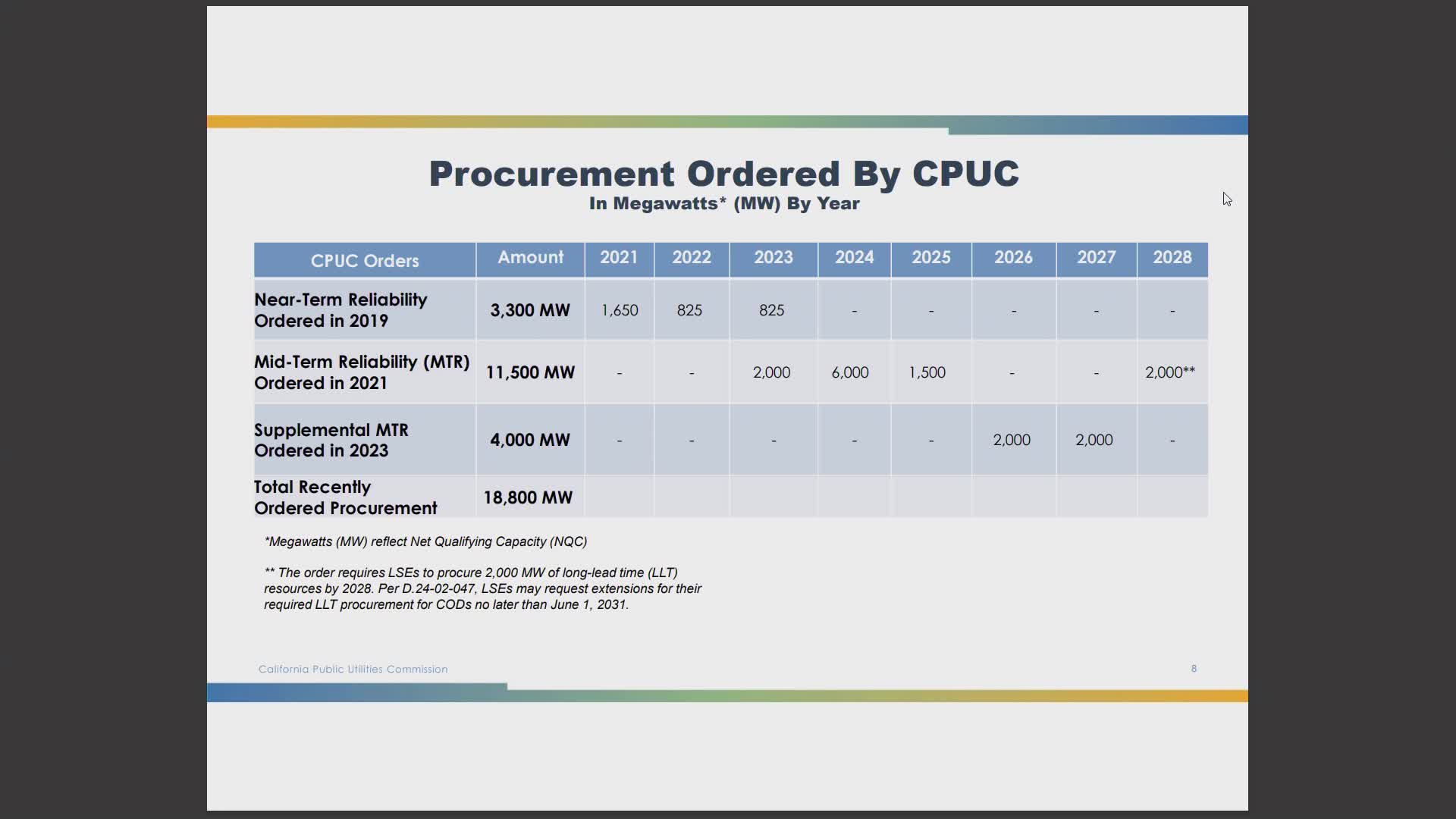Clean energy capacity surges to record levels in 2023
August 30, 2024 | Energy, Utilities and Communications, Standing Committees, California State Senate, Senate, Legislative, California
This article was created by AI summarizing key points discussed. AI makes mistakes, so for full details and context, please refer to the video of the full meeting. Please report any errors so we can fix them. Report an error »

In a recent government meeting, officials announced a significant milestone in clean energy development, reporting nearly 19 gigawatts of net qualifying capacity achieved through new projects. This capacity, which reflects the value of resources to the grid rather than maximum potential, is exclusively derived from clean energy sources, as fossil fuel resources are not permitted under current orders.
The meeting highlighted the importance of aligning energy procurement with California's climate goals, specifically the target of achieving climate neutrality by 2045. The California Air Resources Board (CARB) scoping plans guide the calculations for greenhouse gas emissions in the electric sector, ensuring that the state is on track to meet its environmental objectives.
Officials emphasized the necessity of proactive planning to accommodate growing energy demands, noting that the California Energy Commission (CEC) updates its demand forecasts annually. This approach allows for the identification of new renewable resources well in advance, acknowledging the lengthy timelines required for project development.
Since 2020, the pace of resource development has accelerated, with 21 gigawatts of new capacity installed over the past four years. Notably, 2023 has set a record with over 5,700 megawatts coming online, underscoring the coordinated efforts required to meet these ambitious clean energy goals. The meeting underscored the commitment to transitioning to a sustainable energy future, ensuring that both new and existing loads are served by clean energy projects.
The meeting highlighted the importance of aligning energy procurement with California's climate goals, specifically the target of achieving climate neutrality by 2045. The California Air Resources Board (CARB) scoping plans guide the calculations for greenhouse gas emissions in the electric sector, ensuring that the state is on track to meet its environmental objectives.
Officials emphasized the necessity of proactive planning to accommodate growing energy demands, noting that the California Energy Commission (CEC) updates its demand forecasts annually. This approach allows for the identification of new renewable resources well in advance, acknowledging the lengthy timelines required for project development.
Since 2020, the pace of resource development has accelerated, with 21 gigawatts of new capacity installed over the past four years. Notably, 2023 has set a record with over 5,700 megawatts coming online, underscoring the coordinated efforts required to meet these ambitious clean energy goals. The meeting underscored the commitment to transitioning to a sustainable energy future, ensuring that both new and existing loads are served by clean energy projects.
View full meeting
This article is based on a recent meeting—watch the full video and explore the complete transcript for deeper insights into the discussion.
View full meeting
